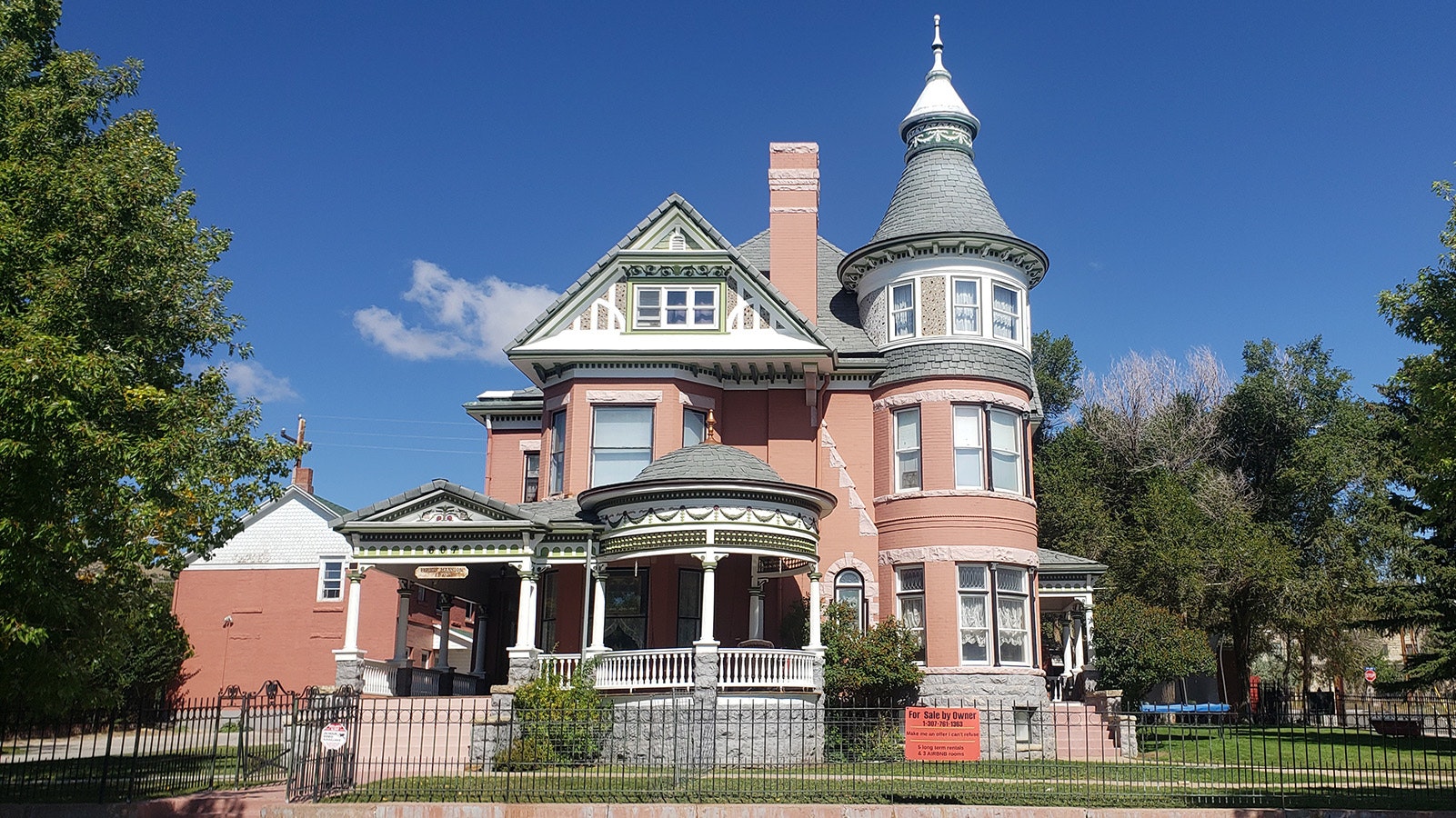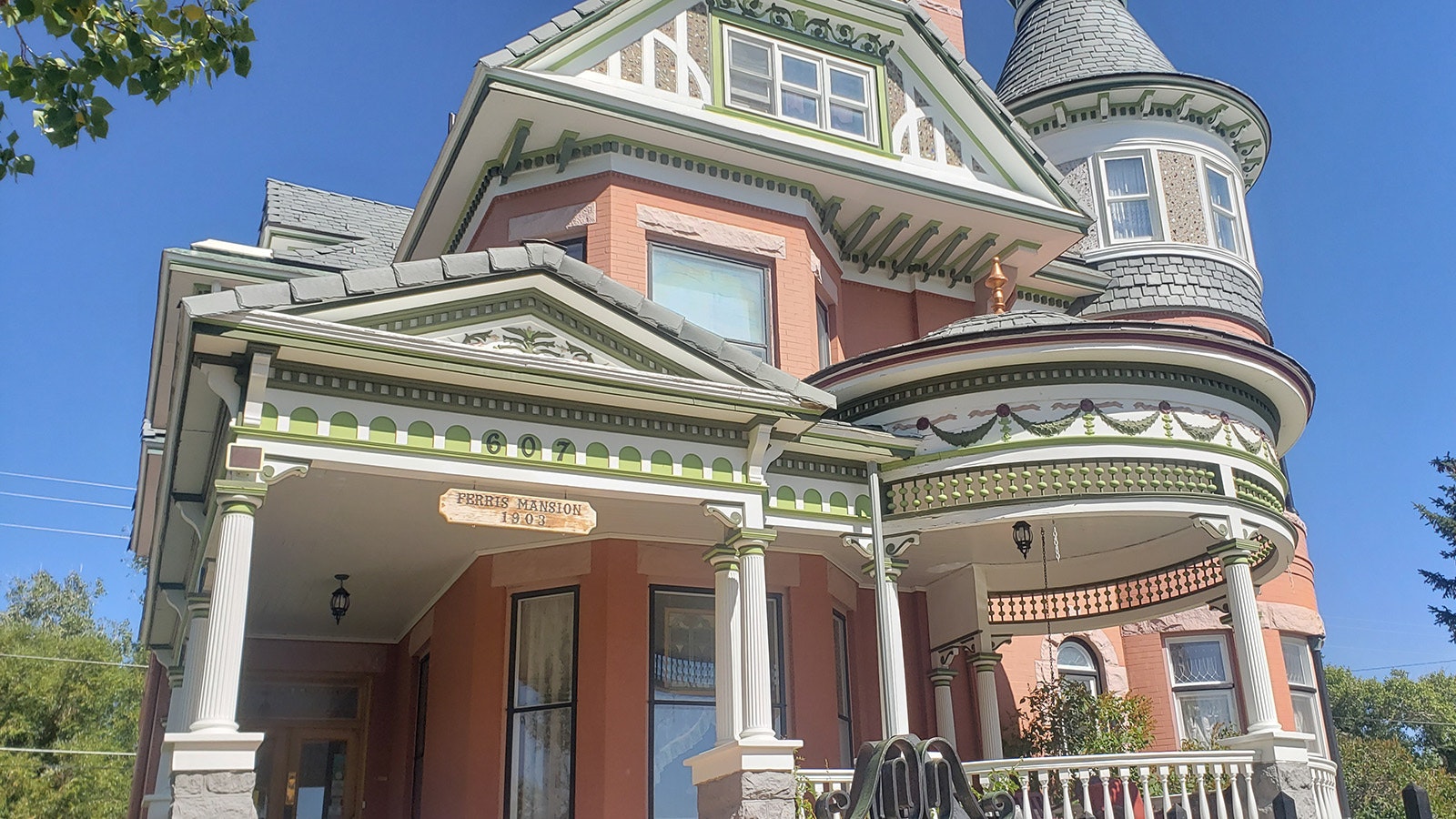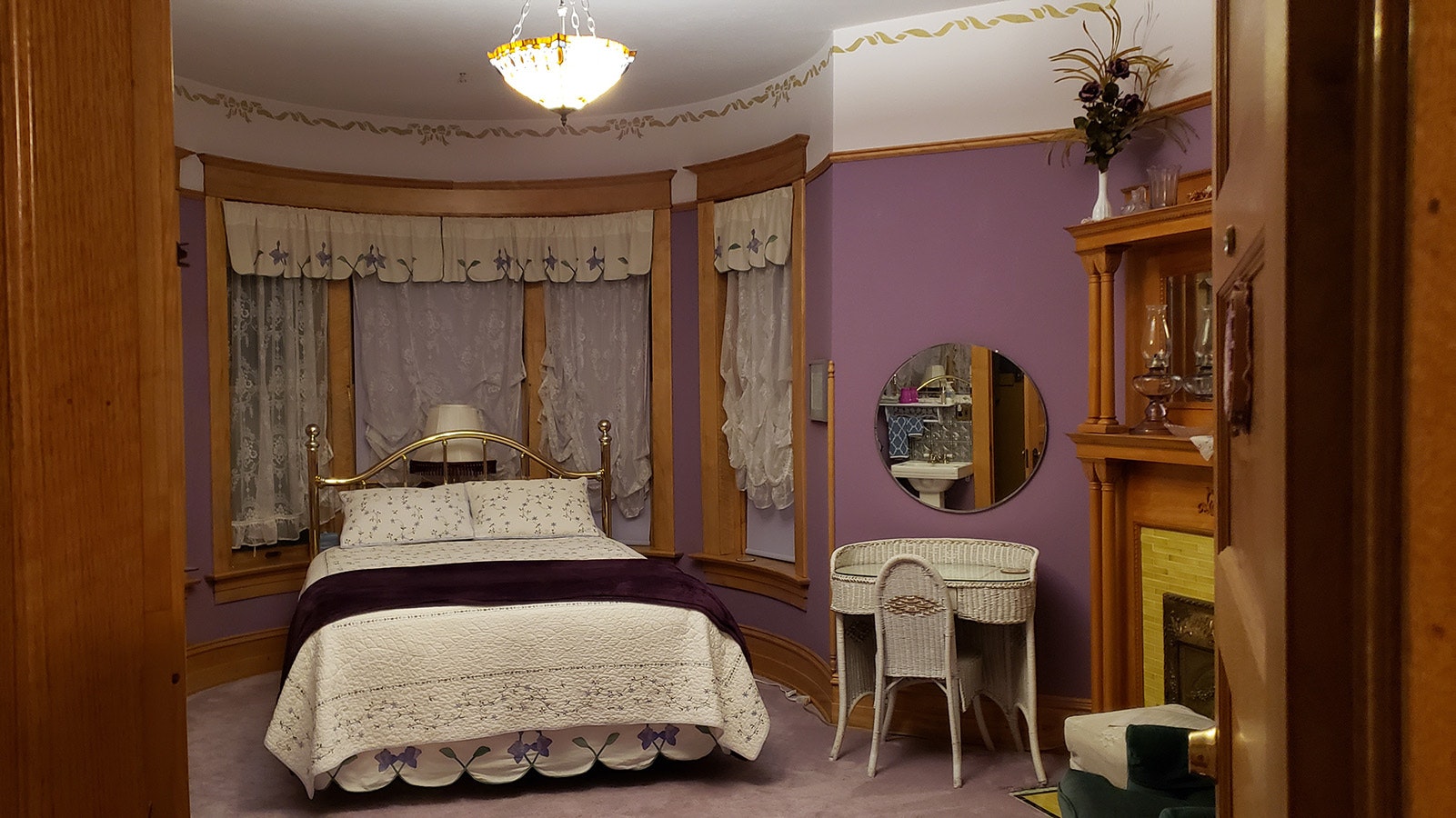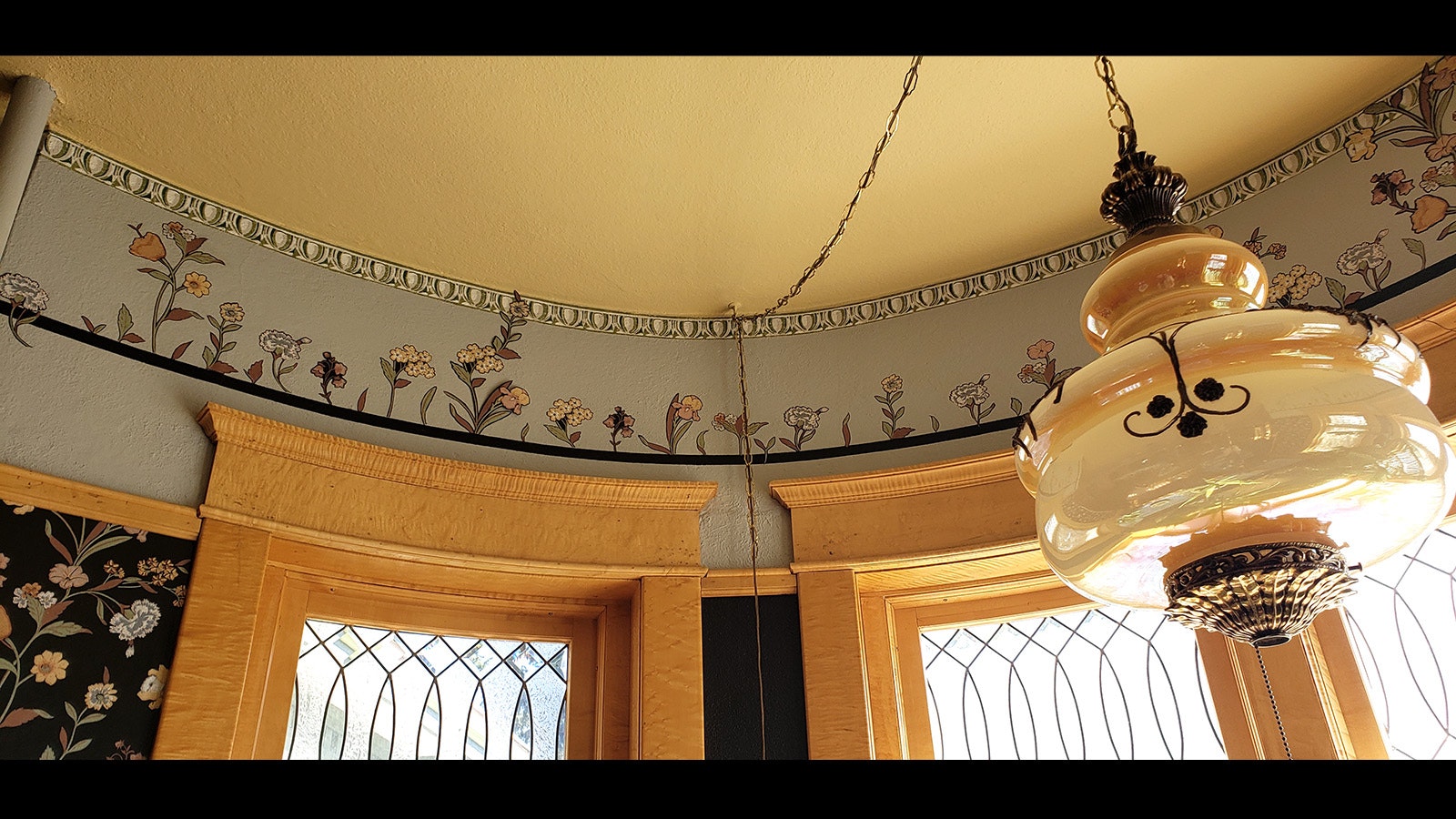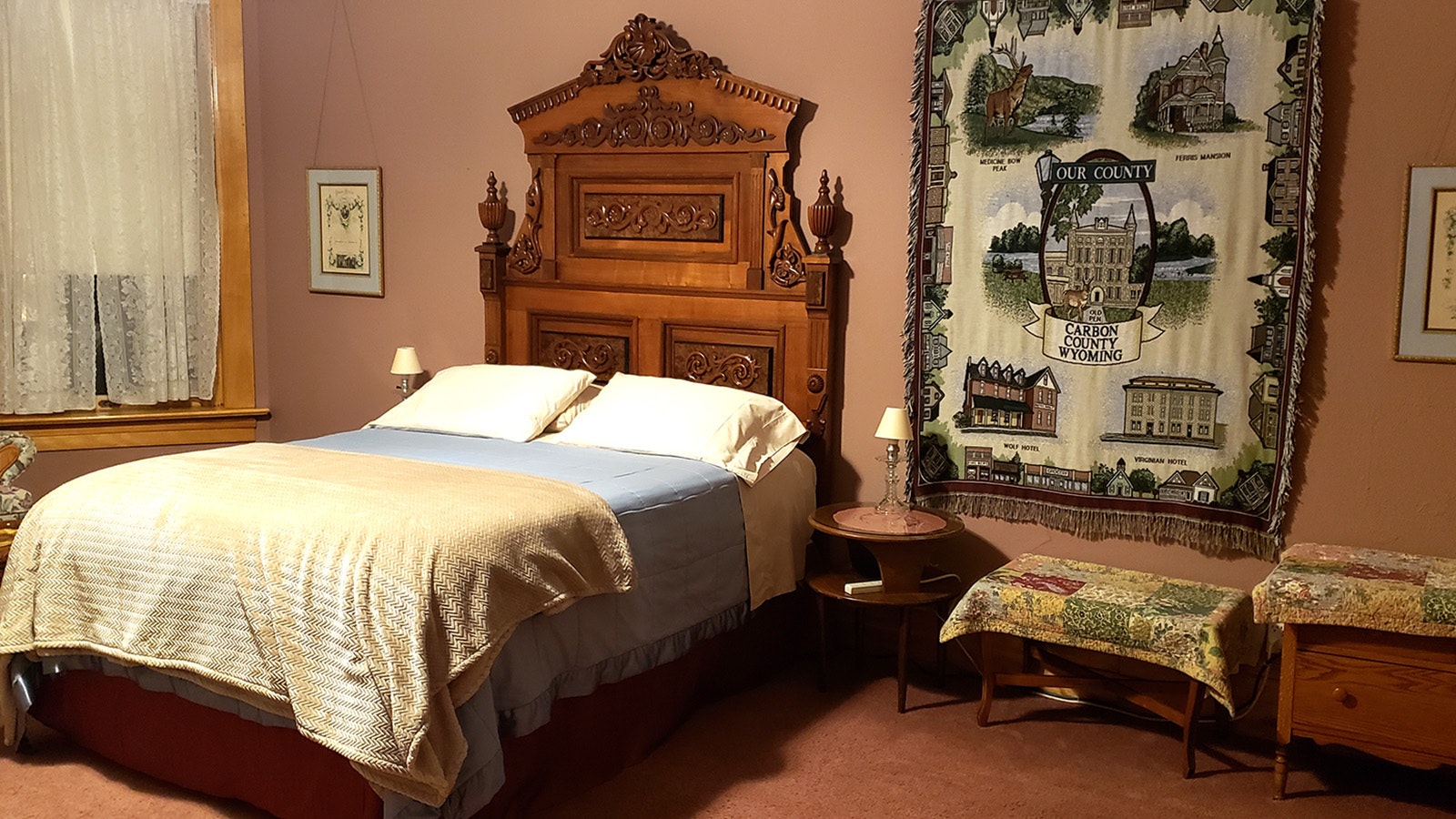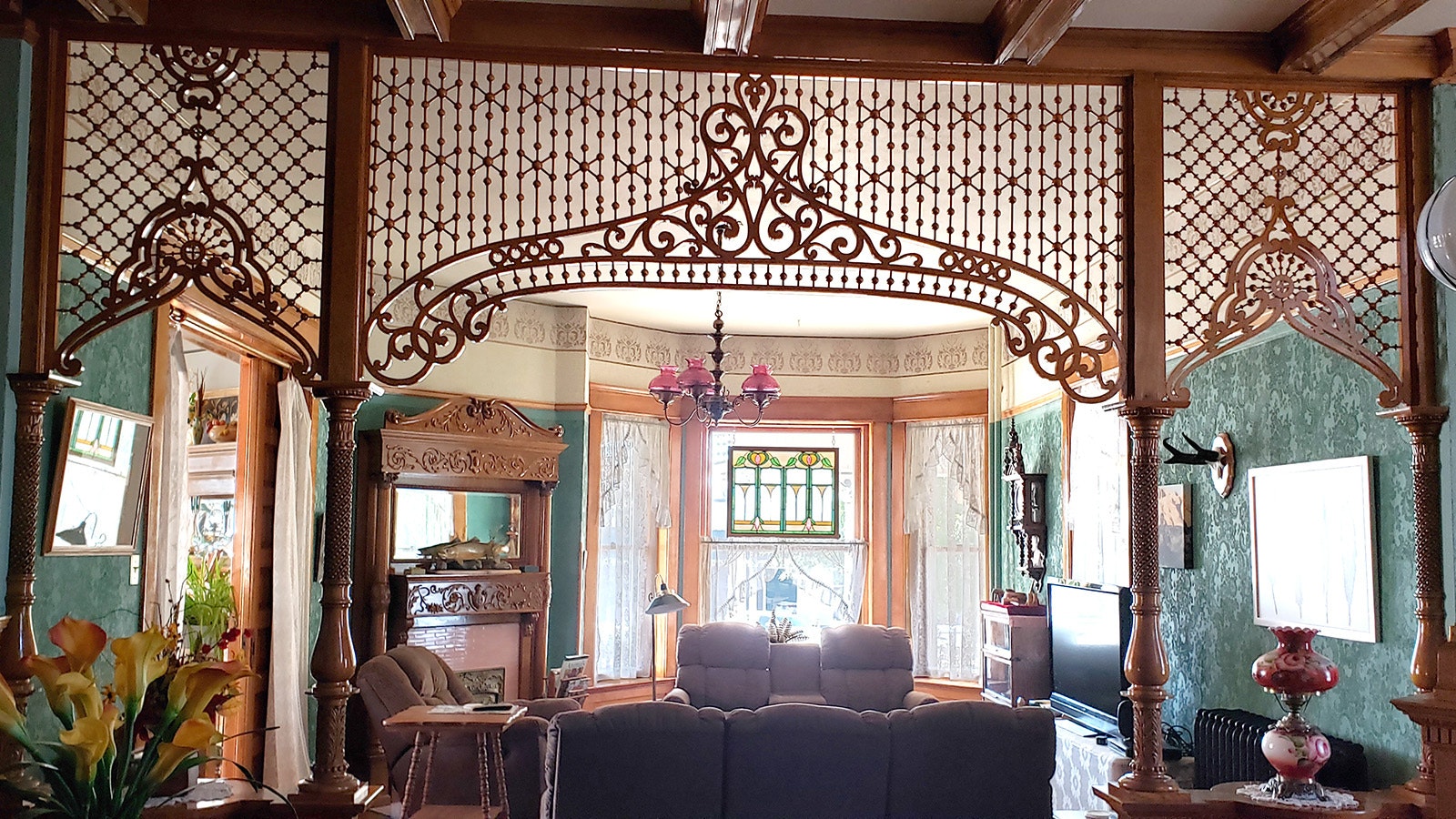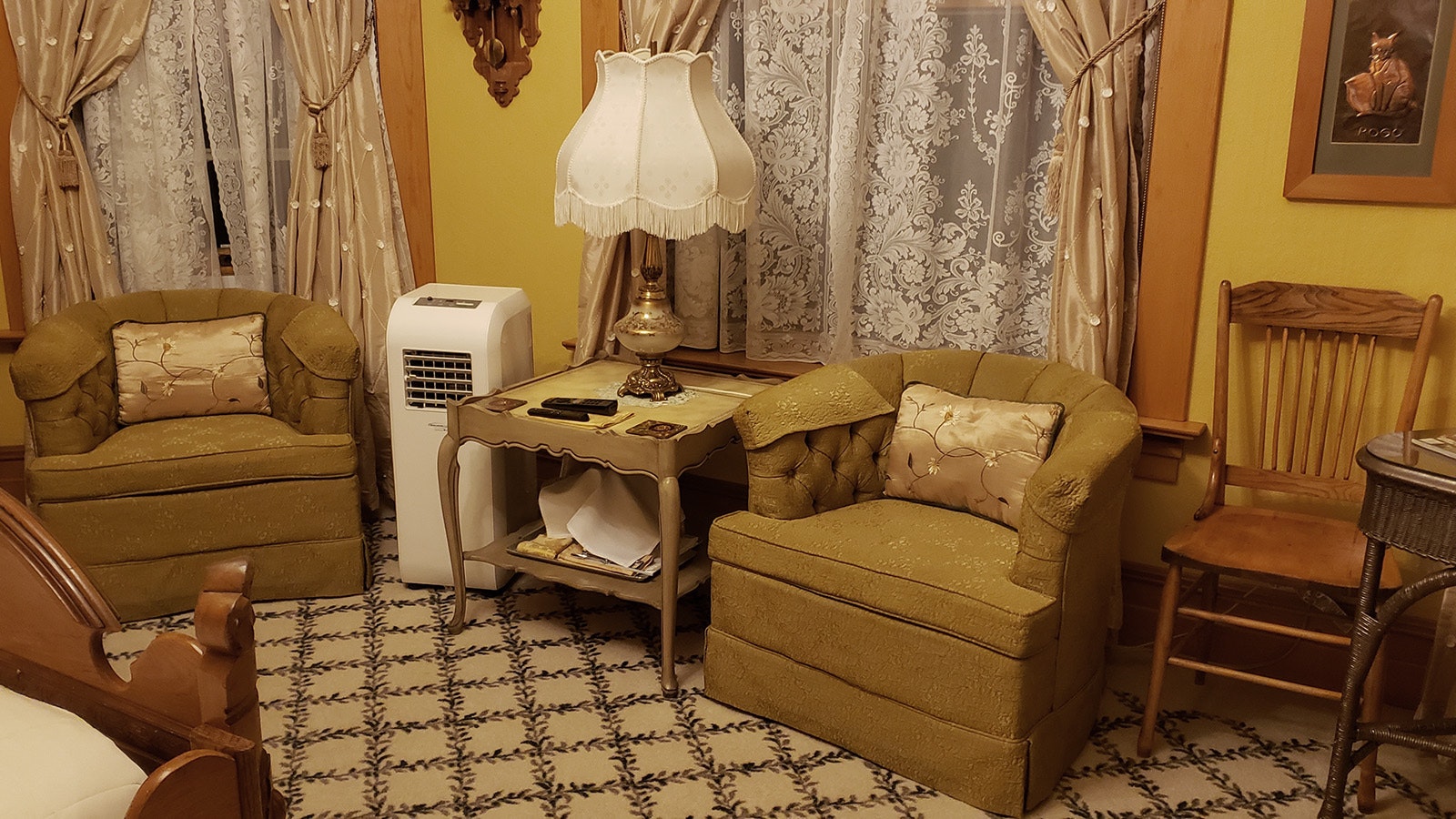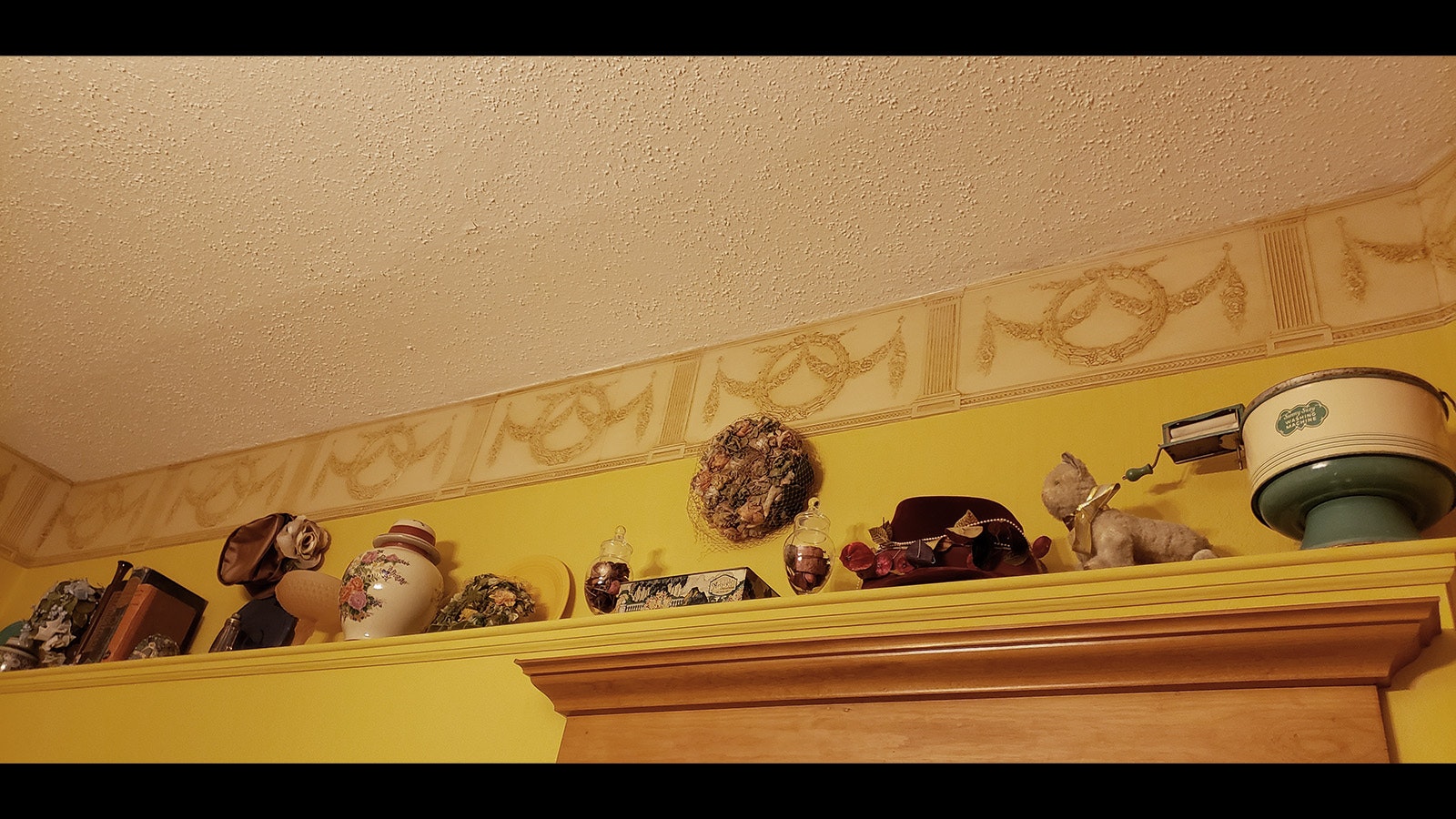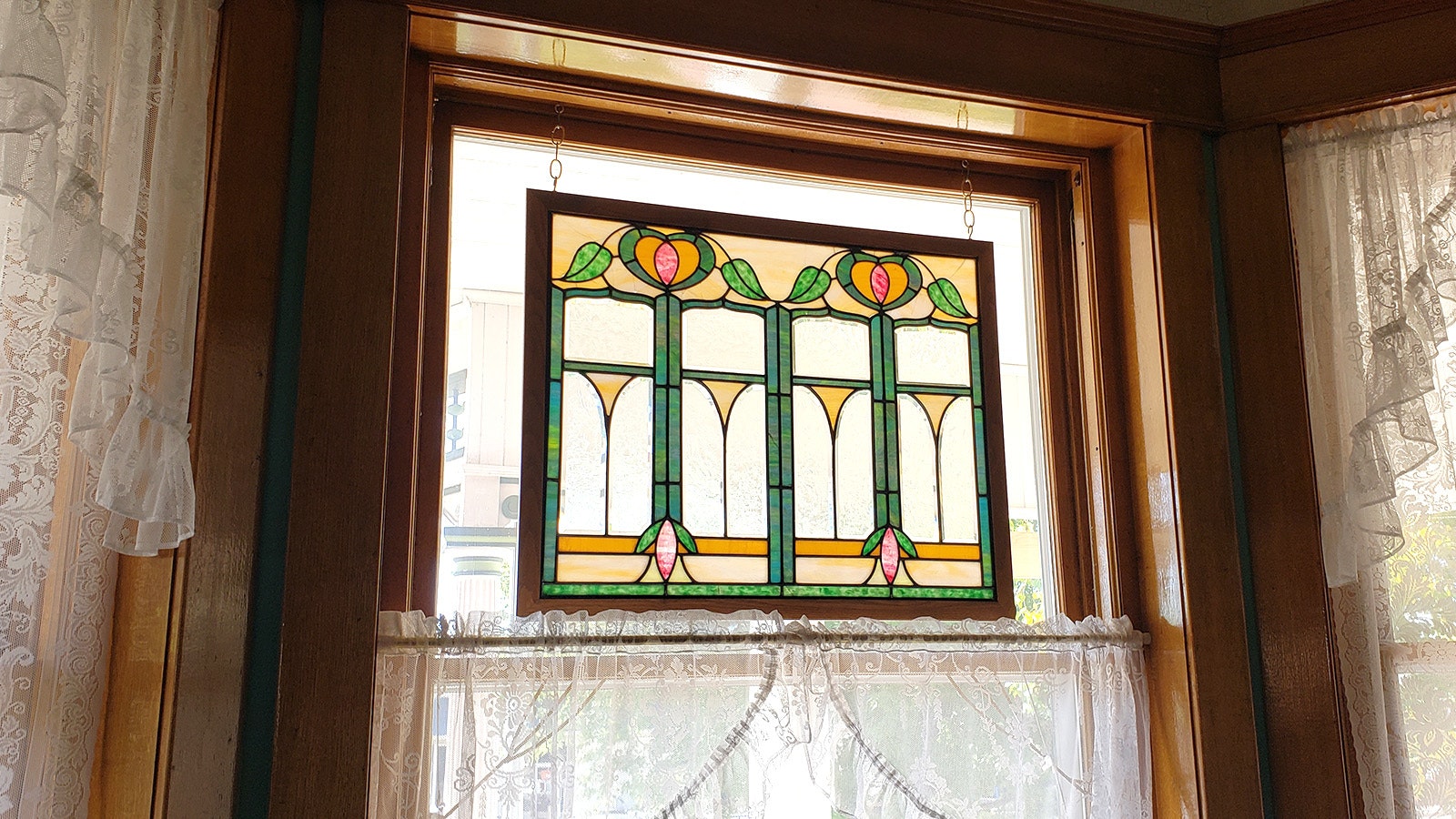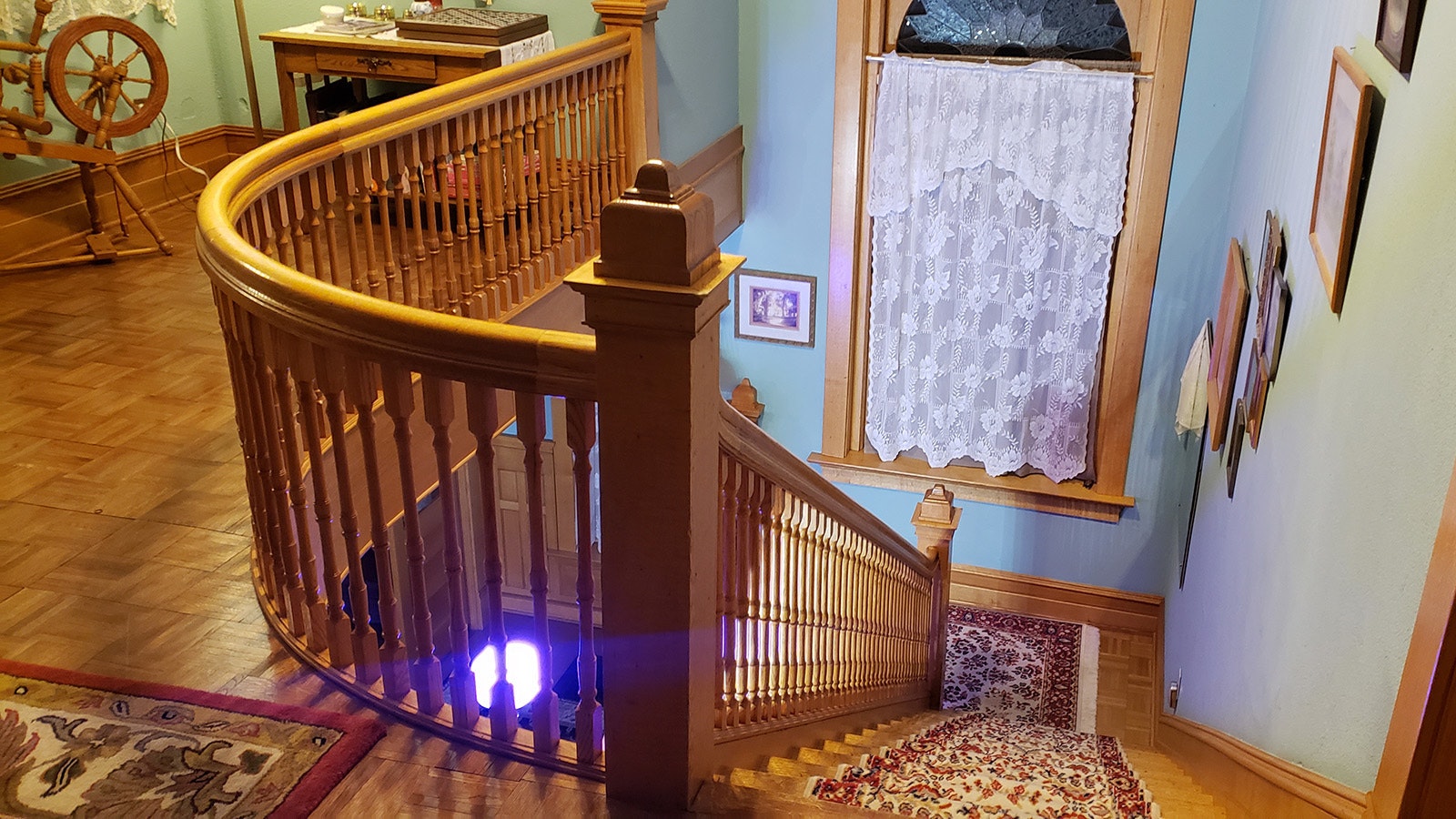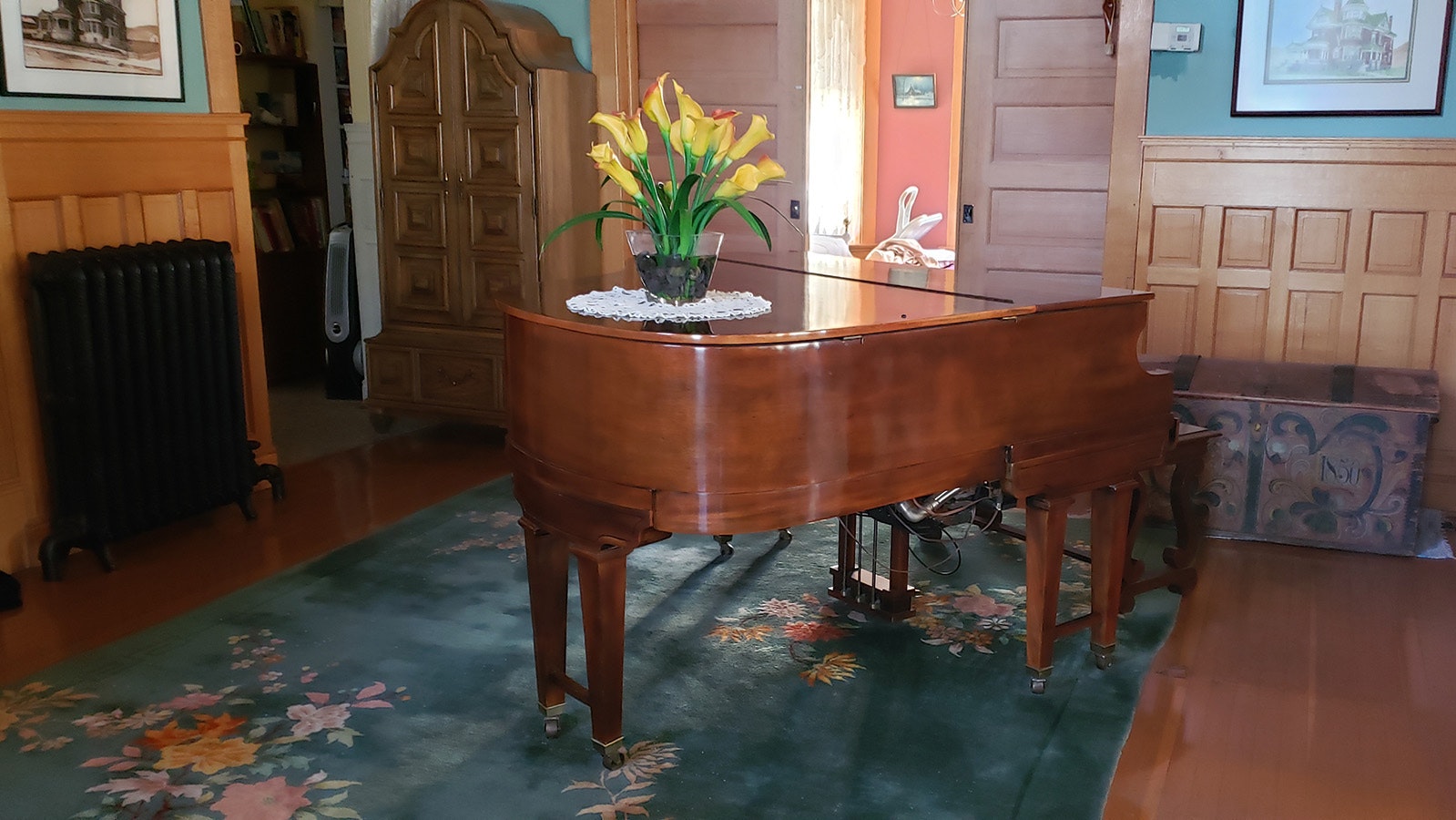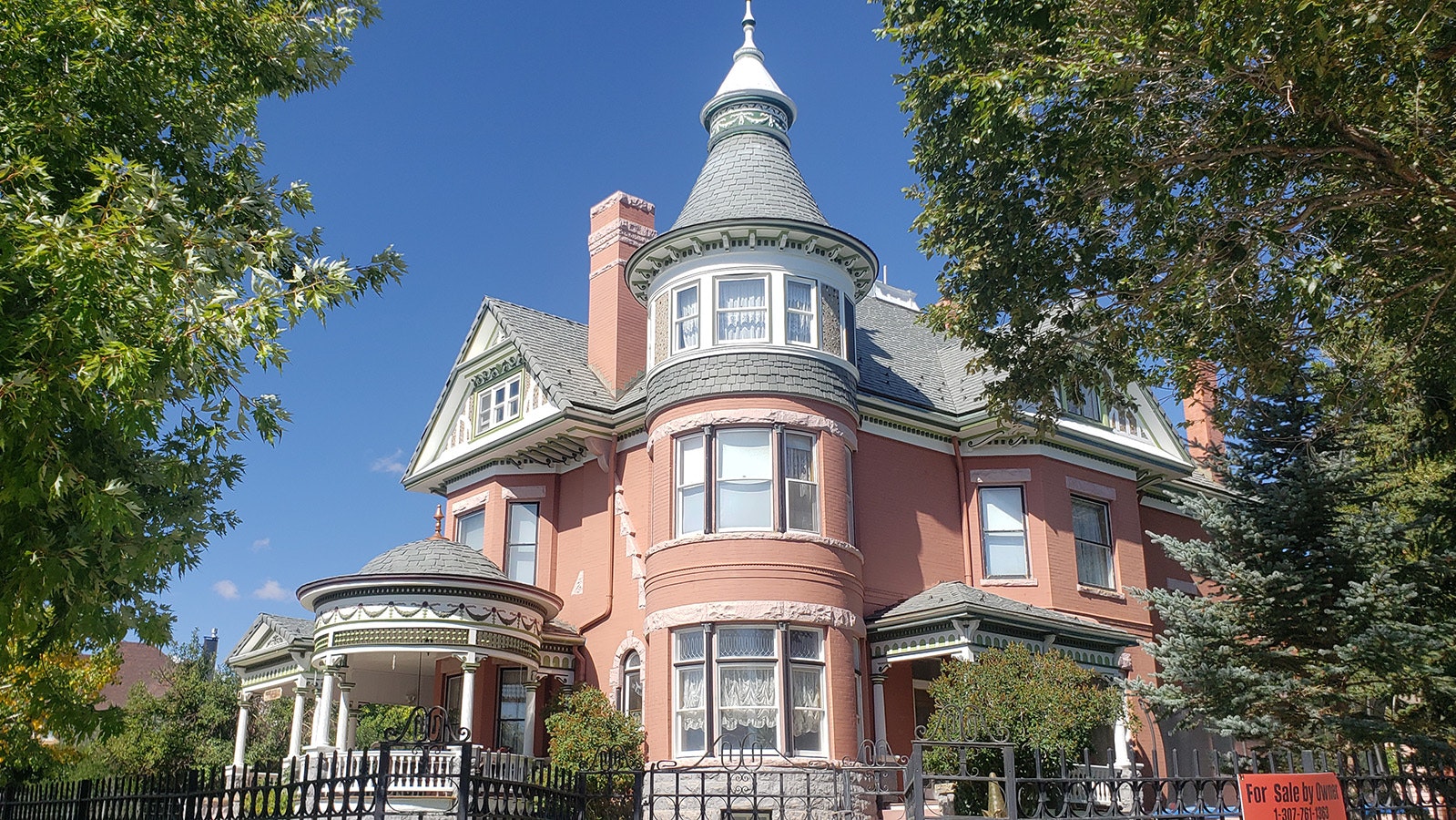RAWLINS — On any given day, you’ll find Kay-Marie Wilder rummaging through one drawer or another, “MacGyvering” up a fix for her historic Ferris Mansion.
Wilder comes by her MacGyver genes honestly. She was a teenager when her parents Janice and David Lubbers bought the Rawlins and Wyoming landmark Ferris Mansion in 1979, and she got to use all of her do-it-yourself fix-it genes as they worked to save the historic home from ruin.
The Lubbers have readily admitted they had no real idea the true magnitude of the task they were taking on when they bought the aging mansion at 607 W. Maple St.
They thought the renovation work would take a couple of years, tops. Instead, it took 25 years of steady work to fully return the house to its former 1903 hardwood-and-lace glory.
“The gentleman who owned it before us was kind of an absentee landlord,” Wilder told Cowboy State Daily. “So, things were not taken care of. You could have as many pets as you wanted, it was just horrific. There was like a mattress in the Rose Room, and I don’t know what happened there. Stuff was just stuck to the walls and there was fecal matter from dogs, too.”
There was also a great deal of medical equipment strewn about. A doctor had inhabited one of the spaces at one time, so there was truly no telling what one might find lying about.
Wilder recalls her parents tearing out all the carpet first thing and using a scoop shovel to toss truckloads of debris and rubbish out of the mansion to make it a habitable living space.
The mansion had been subdivided into apartments sometime in the 1940s, so it had lots of walls that needed to be torn out and kitchens in the strangest of places. It didn’t take long for Janice to realize the couple needed help if they were going to finish the renovation within their lifetimes.
So she called her sister, Phyllis Lenz, and talked her into coming and helping with all the work.
“She says, ‘Well, I’ll move out for a couple of years,’” Wilder said, smiling at the memory. “She was here for 36 years. Those ladies worked great together and my dad, MacGyver, could do anything — electrician, plumber, mechanic. So he wasn’t the type to be daunted by the task of buying this place and fixing it up.”
No Relation To The Ferris Wheel
The Ferris Mansion in Rawlins is both a sad and an inspiring tale all wrapped into one.
George Ferris had for his whole life pursued great wealth. On the very day he achieved it by selling the Ferris-Hagerty mine for $1 million, he was killed while riding in a runaway stagecoach. The accident happenedon the aptly named Snow Slide Hill on his way home from the mine in Encampment.
Newspaper accounts of the time say that his stagecoach was passing an area where a team of horses had been killed by an avalanche the prior year and the stench of the dead bodies terrified the stagecoach’s team of horses. Ferris was in the stagecoach with a brother, who escaped unharmed. But Ferris was tossed and hit a brake block and brake beam on the wagon as it was overturning.
“There is something singularly pathetic in the death of Mr. Ferris, and it furnishes a theme for the moralists who like to discourse on the vanity of life and the rewards that often come from a life of toil too late to be enjoyed,” a newspaper obituary at the time read. “Having spent all his years seeking wealth, Mr. Ferris finally attained it in a way that has made his name famous all over the land, only to have the reward snatched from his hands on the very day of his triumph.”
If his death had been pathetic, what came next could certainly be considered inspiring.
His wife Julia announced that she would complete construction of the Ferris Mansion, a Barber and Klutz home likely sourced from the book “Modern Dwellings,” which was published in 1888.
Barber was serving a nouveau riche clientele who had made fortunes out West and wanted homes that made a statement, not only about their success, but about the success of the West.
The cost for Julia to complete the spacious 21-room, three-story home with 65 windows and five fireplaces was in the neighborhood of $60,000 in 1900 dollars, plus an additional $25,000 for the furnishings, which she sourced from San Francisco. A glass chandelier in the home itself cost $1,000.
Colorado-pressed brick custom-designed for the home was used to form the home’s 18-inch-thick walls, which had an air space in the middle. Local sandstone was used to trim between the bricks, as well as the granite base of the home.
The roof tiles were interlocking ceramic Ludiwici tiles with a lifespan of 100 to 300 years.
8,000 Square Feet Of Catastrophe
Restoring the home to that level of grandeur was a daunting task. Picture 8,000 square feet of mansion turned into a maze of apartments lined with tired, moldy carpets and debris, peeling paint, rotting windowsills and the occasional gaping hole for good measure.
Once the overall mess has been carted out, though, the task had only just begun.
There were hundreds of hours of work in just sanding and polishing all the beautiful woodwork in the home, most of which had been hidden behind layers of ugly and peeling paint.
All that effort proved worthwhile, though. Behind the peeling paint, the Lubbers discovered 8-foot-tall pocket doors that were made of one of the rarest woods in the world, birdseye maple. It’s a distinctive pattern found in just 1% of all maple wood.
A fair amount of sleuthing also was required to restore the home.
Janice subscribed to magazines and did research in the library to figure out what should be there that wasn’t. She also tracked down the location of the mansion’s original grand staircase in Encampment and bought it back. Its original newel was still intact, though the spindles were not. So, she bought replacements — 150 of them.
Old Paint For New
The couple also took off the bright red paint on the home and replaced it with a rose hue, more in keeping with what had been there when the Queen Anne-style Barber home was built.
There were lots of “MacGyver” situations in the process of doing all that work, and Wilder is proud to show a few of them off.
In the dining area, for example, some friends were dancing on the hardwood floor and their heels caused a few scuff marks and indentions. Not to worry. Janice stenciled over all of that quite nicely. It’s not noticeable at all now.
Then there was the light fixture at the base of the stairs, original to the home, that was missing one white pane. There was no affordable way to source a single white pane of glass like that from the turn of the century. So Janice took a knife to a white plastic milk jug, carefully cutting out a replacement piece that is all but indistinguishable from the others, unless pointed out.
Similarly, when the family was given a quote of $15,000 to create curved storm windows, the Lubbers figured out how to fashion their own from heavy sheet plastic for $200.
The restoration process was not all smooth sailing, of course. One winter, a below-average cold freeze caused one of the mansion’s pipes to burst. Hundreds of gallons of water flooded out all over the beautiful work they’d done in that area, peeling plaster from the walls and leaving a disaster in its wake.
“Water just poured down and the ceiling caved in,” Wilder said. “It was just awful.”
No problem. Janice and Lenz had recently salvaged some tin ceiling tiles from a downtown bar in Rawlins. They had already been working on restoring them to put somewhere. They would be perfect in the kitchen.
Once the damage had been repaired and the ceiling tiles were all in place, everything seemed to fit right in as if it had always been that way.
As a result of the flood, a secret butler’s door also was discovered. That made for much better traffic patterns through the home, which the couple turned into a bed and breakfast for several years and helped pay for the continued work on the beautiful old home.
Ghosts Galore
Tell anyone in Rawlins that you’re staying at the Ferris mansion and likely you’ll see eyes get round as quarters.
“Which room are you staying in?” is the inevitable question. “Is it … the round room? Driving past the house at night, I think I’ve seen a small child in the window of the round room.”
That small child is supposed to be Cecil Ferris, killed in a shooting accident by one of his brothers who was playing with a gun that an older brother had brought home and put down on a bedroom table.
Cecil happened to be passing through the door of the bedroom as his brothers were playing with the gun. The shot hit him in the neck, severing an artery and killing him instantly.
But the ghost that Janice reported seeing in a newspaper article was that of Julia herself.
The experience, Wilder said, was a disquieting one at the time. But since the home’s restoration, all the “energy” has transformed in the house.
Some guests have reported seeing a woman in white standing over their bed, but this reporter experienced no hauntings while in the mansion.
While the bed and breakfast Wilder’s parents started is no longer operating, Wilder has continued to offer a fabulous stay at the Ferris Mansion through Airbnb. She has three rooms for short-term stays, the Blue Room, The Rose Room and the Gold Room. Each has its own private bath, and a couple of the rooms also feature beautiful fireplaces.
Wilder plans to sell the now regal historic Ferris Mansion as she has young grandchildren in Utah. It is for sale by owner for $750,000. It sits in a secluded neighborhood of Rawlins, where deer commonly visit to nibble on the grass.
The mansion is a grand old lady and an iconic piece of Wyoming’s history.
Renée Jean can be reached at renee@cowboystatedaily.com.

